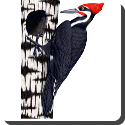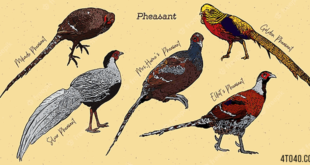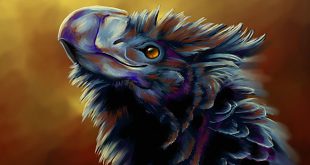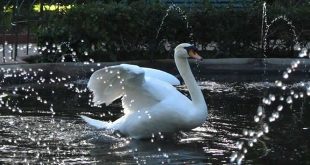 Woodpecker — The woodpeckers, piculets and wrynecks are a family, Picidae, of near-passerine birds. Members of this family are found worldwide, except for Australia and New Zealand, Madagascar, and the extreme polar regions. Most species live in forests or woodland habitats, although a few species are known to live in treeless areas such as rocky hillsides and deserts.
Woodpecker — The woodpeckers, piculets and wrynecks are a family, Picidae, of near-passerine birds. Members of this family are found worldwide, except for Australia and New Zealand, Madagascar, and the extreme polar regions. Most species live in forests or woodland habitats, although a few species are known to live in treeless areas such as rocky hillsides and deserts.
The Picidae are just one of the eight living families in the order Piciformes. Members of the order Piciformes, such as the jacamars, puffbirds, barbets, toucans and honeyguides, have traditionally been thought to be very closely related to the woodpeckers, piculets and wrynecks. More recently, DNA sequence analyses have confirmed this view.
There are about 200 species and about 30 genera in this family. Many species are threatened or endangered due to loss of habitat or habitat fragmentation. Two species of woodpeckers, the Ivory-billed Woodpecker and the Imperial Woodpecker, have been considered extinct for about 30 years (there has been some controversy recently whether these species still exist).
The smallest woodpecker is the Bar-breasted Piculet, at 7 g and 8 cm (3¼ inches). The largest woodpecker was the Imperial Woodpecker, at an average of 58 cm (23 inches) and probably over 600 g (1.3 lb). The Ivory-billed Woodpecker is (or was) slightly smaller at 50 cm (20 inches) and a weight of 500 g (1.1 lb). If both the Ivory-billed and Imperial Woodpeckers are indeed extinct, the largest extant woodpecker is the Great Slaty Woodpecker of Southeast Asia, at about 50 cm (20 inches) and 450 g (1 lb). A number of species exhibit sexual dimorphism in size, bill length and weight. In the piculets it is often the females that are larger, amongst the woodpeckers that show sexual dimorphism it is usually the males that are larger.
Most species possess predominantly white, black and brown, green and red plumage, although many piculets show a certain amount of grey and olive green. In woodpeckers, many species exhibit patches of red and yellow on their heads and bellies, and these bright areas are important in signaling. The dark areas of plumage are often iridescent. Although the sexes of Picidae species tend to look alike, many woodpecker species have more prominent red or yellow head markings in males than in females.
The woodpeckers range from highly antisocial solitary species that are aggressive to other members of their species, to species that live in groups. Group-living species tend to be communal group breeders. In addition to these species, a number of species may join mixed-species feeding flocks with other insectivorous birds, although they tend to stay at the edges of these groups. Joining these flocks allows woodpeckers to decrease anti-predator vigilance and increase their feeding rate. Woodpeckers are diurnal, roosting at night inside holes. In most species the roost will become the nest during the breeding season.
All members of the family Picidae nest in cavities. Almost every species nests in tree cavities, although in deserts some species nest inside holes in cactus and a few species nest in holes dug into the earth. Woodpeckers and piculets will excavate their own nests, but wrynecks will not. The excavated nest is usually only lined from the wood chips produced as the hole was made. Many species of woodpeckers excavate one hole per breeding season, sometimes after multiple attempts. It takes around a month to finish the job. Abandoned holes are used by other birds and mammals that are secondary cavity nesters. Because nesting holes are in great demand by other cavity nesters, woodpeckers face competition for the nesting sites they excavate from the moment the hole becomes usable. This may come from other species of woodpecker, or other cavity nesting birds like swallows and starlings. Woodpeckers may aggressively harass potential competitors, and also use other strategies to reduce the chance of being usurped from their nesting site; for example the Red-crowned Woodpecker digs its nest in the underside of a small branch, which reduces the chance that a larger species will take it over and expand it.
The diet of woodpeckers consists mainly of insects and their grubs taken from living and dead trees, and other arthropods, along with fruit from live trees, nuts and sap both from live trees. Ecologically, they help to keep trees healthy by keeping them from suffering mass infestations. The family is noted for its ability to acquire wood-boring grubs using their bills for hammering, but overall the family is characterized by its dietary flexibility, with many species being both highly omnivorous and opportunistic. The insect prey most commonly taken are insects found inside tree trunks, whether they are alive or rotten wood and in crevices in bark on trees. These include beetles and their grubs, ants, termites, spiders, and caterpillars. These may be obtained either by gleaning or more famously by excavating wood. Having hammered a hole into the wood the prey is excavated by a long barbed tongue. The ability to excavate allows woodpeckers to obtain tree sap, an important source of food for some species. Most famously the sapsuckers, (genus Sphyrapicus ) feed in this fashion, but the technique is not restricted to these and others such as the Acorn Woodpecker and White-headed Woodpecker also feed in this way. It was once thought that the technique was restricted to the New World, but Old World species such as the Arabian Woodpecker and Great Spotted Woodpecker also feed in this way.
 Kids Portal For Parents India Kids Network
Kids Portal For Parents India Kids Network





